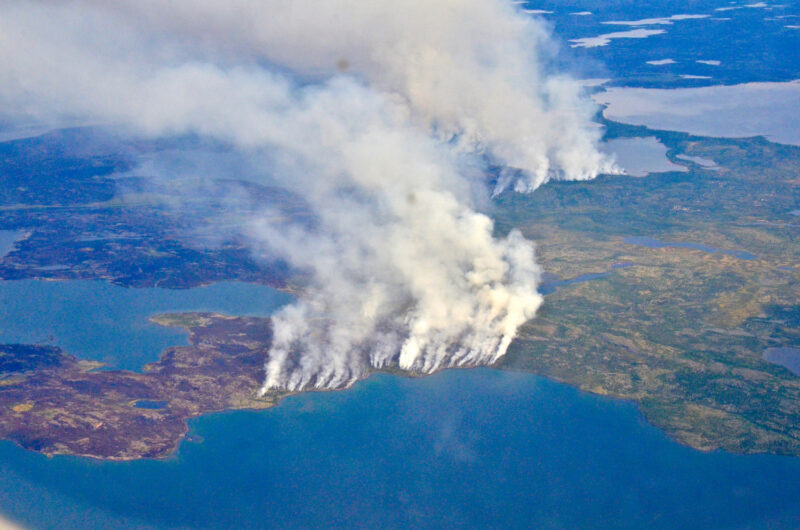The Arctic, known for its icy landscapes and frigid temperatures, is facing an alarming and unexpected threat: wildfires. In recent years, Arctic fires have become increasingly common, posing severe consequences for the environment, wildlife, and even human populations. This article explores the causes, impacts, and solutions surrounding Arctic fires.
Table of Contents
- What Causes Arctic Fires?
- The Impact of Climate Change
- The Role of Human Activities
- Monitoring and Predicting Arctic Fires
- The Consequences for Arctic Ecosystems
- The Threat to Indigenous Communities
- International Collaboration in Firefighting Efforts
- Strategies for Prevention and Mitigation
- Innovations in Arctic Firefighting
- The Economic Costs of Arctic Fires
- Public Awareness and Education
- Conclusion
- FAQs
What Causes Arctic Fires?
Arctic fires primarily result from a combination of factors. Rising temperatures, prolonged heatwaves, and dry conditions create the perfect environment for wildfires to ignite and spread across the region’s vast landscapes.
The Impact of Climate Change
Climate change is a significant driver of Arctic fires. As global temperatures rise, the Arctic is warming at twice the rate of the rest of the world. This increased warmth leads to the thawing of permafrost, making the region more susceptible to fires.
The Role of Human Activities
Human activities also play a crucial role in Arctic fires. Activities such as industrial development, tourism, and shipping can introduce ignition sources, while inadequate waste management can lead to uncontrolled blazes.
Monitoring and Predicting Arctic Fires
Efforts to monitor and predict Arctic fires have improved in recent years. Advanced satellite technology and data analysis enable scientists to track fire outbreaks and anticipate potential risks.
The Consequences for Arctic Ecosystems
Arctic fires have devastating consequences for the delicate ecosystems of the region. They can lead to the destruction of vegetation, soil degradation, and the release of stored carbon, further exacerbating climate change.
The Threat to Indigenous Communities
Indigenous communities in the Arctic face unique challenges when it comes to wildfires. These fires can disrupt traditional ways of life, destroy vital resources, and pose immediate threats to their safety.
International Collaboration in Firefighting Efforts
Given the transboundary nature of Arctic fires, international cooperation is essential in firefighting efforts. Nations bordering the Arctic have come together to combat this growing threat.
Strategies for Prevention and Mitigation
Prevention and mitigation strategies include controlled burns, improved firebreaks, and stricter regulations on human activities in sensitive Arctic regions.
Innovations in Arctic Firefighting
Innovations in firefighting technology, such as specialized aircraft and equipment designed for Arctic conditions, are helping responders combat fires more effectively.
The Economic Costs of Arctic Fires
The economic costs of Arctic fires are substantial, encompassing damage to infrastructure, loss of resources, and increased firefighting expenditures.
Public Awareness and Education
Raising public awareness and educating communities about the risks of Arctic fires are crucial steps in minimizing their impact.
Conclusion
Arctic fires are a growing threat to the fragile ecosystems and communities of the North. Combating these fires requires a coordinated effort from nations, innovative solutions, and a commitment to addressing the root causes, such as climate change and human activities.
Similar Articles
- Arctic Amplification: Unraveling the Mysteries of Polar Climate
- Aquaponics: A Sustainable Farming Revolution
FAQs
Q1: Are Arctic fires a recent phenomenon?
A: While wildfires have occurred in the Arctic for centuries, the frequency and severity of these fires have increased significantly in recent years due to factors like climate change.
Q2: How do Arctic fires affect global climate?
A: Arctic fires release carbon dioxide and other greenhouse gases, contributing to global warming. They also accelerate the thawing of permafrost, releasing even more stored carbon into the atmosphere.
Q3: What can individuals do to help prevent Arctic fires?
A: Individuals can reduce their carbon footprint by using energy-efficient appliances, reducing waste, and supporting policies that combat climate change. Additionally, practicing responsible tourism and respecting fire safety guidelines in the Arctic can make a difference.
Q4: Are there any long-term solutions to Arctic fires?
A: Long-term solutions include addressing the root causes, such as reducing greenhouse gas emissions, implementing sustainable land use practices, and enhancing international cooperation in firefighting and prevention efforts.
Q5: How can international collaboration make a difference in fighting Arctic fires?
A: International collaboration allows nations to pool resources, share expertise, and coordinate firefighting efforts across borders. This collective approach is essential in addressing the transboundary nature of Arctic fires and their far-reaching impacts.










